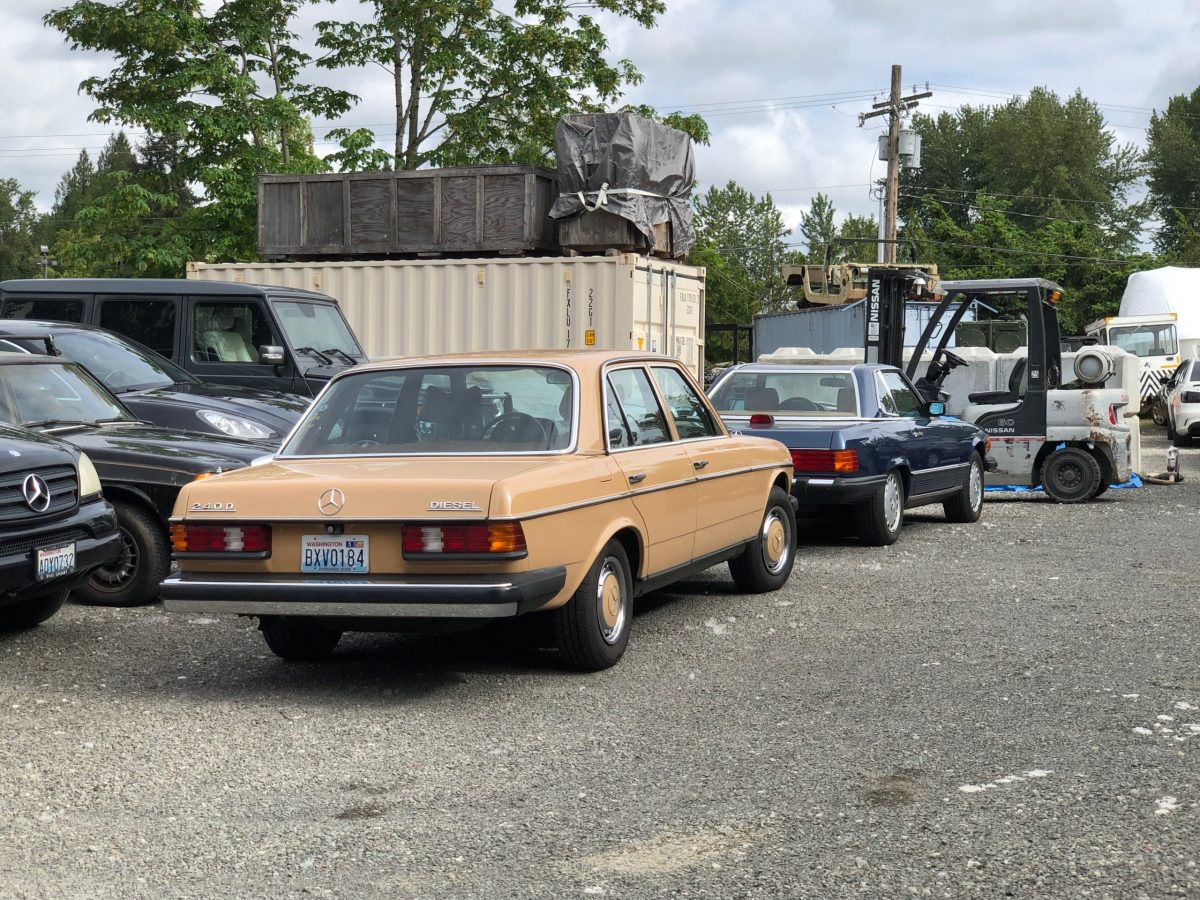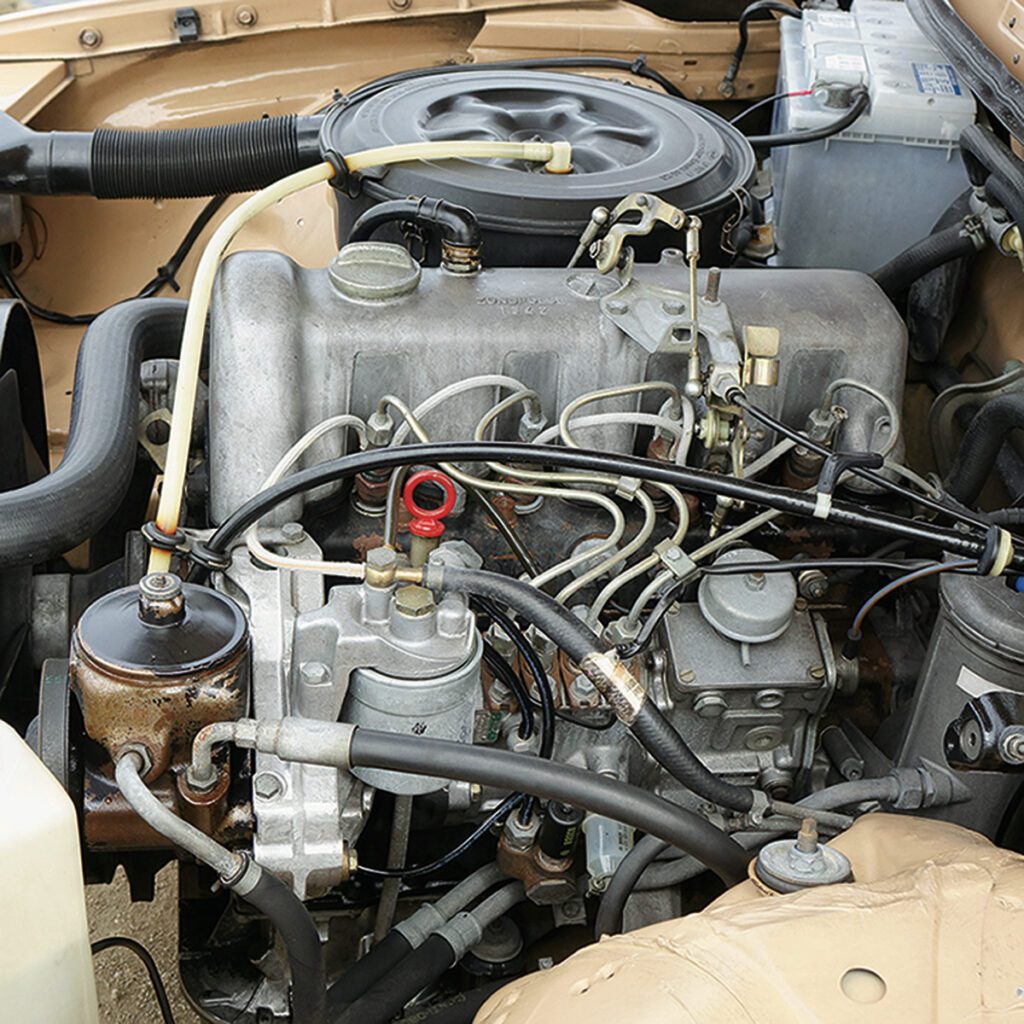Sorting the 240D: the 250,000-Mile Service

Once I got the 240D home to Seattle, it was time for a good sorting. This is something I do with pretty much every used car I buy: take it to the best specialist in the area for a complete evaluation — from hood ornament to exhaust tip — and have them take care of any outstanding needs.
No matter how well-kept it is, a used car almost always has a few items to address, whether it’s aging tires or worn out shifter bushings. Some people take a fix-it-as-you-go approach to this stuff, tackling a few things here and a few things there over the course of their ownership. That’s understandable. It certainly prevents facing a big repair bill right off the bat. But I prefer to get everything done all at once. That way I can enjoy the car in its full glory from the get-go.
Even if the mechanic finds nothing, knowing that all the major systems have been inspected and given the stamp of approval provides great peace of mind.
In the Seattle area, the go-to place for older Mercedes is Schmitt Automotive, an independent father-son operation on the outskirts of town. The owner, Frank Schmitt, gained his expertise while wrenching on Benzes in the 1970s and 80s for the local dealer, Phil Smart Mercedes-Benz (now Mercedes-Benz of Seattle). Not too long ago, his son joined him in the trade, and together they provide both expert care and honest service, which is exactly what you want in a repair shop.
When I dropped off the 240D, both Frank and his son Mark came out to admire it. As Frank surveyed the car and peppered me with questions, Mark took notes. “Has the timing chain been done?” It hadn’t. “Rear springs are sagging a bit — should we swap in some new ones?” Definitely. And so on. I had a few things to add to the punch list, too, such a new idle control cable and knob, a common W123 failure point, and the previously-noted stuck thermostat. Frank also advised me to upgrade my insurance policy to a $20,000 agreed-value plan (which I did), noting that should anything happen to a 240D this nice finding a replacement would be near impossible.
After I departed, they got the car up onto the lift and identified a few more needs, including rear brake discs, pads, and calipers plus shocks all around. Mark took point on tracking down everything it needed. Fortunately, parts for these aging W123s are still widely available. Thanks to their popularity around the globe as well as their remarkable longevity, Mercedes has continued to make almost everything you might need to keep a W123 on the road. And if not, there is usually a good aftermarket supplier.

All in all, the 240D spent a couple of weeks at the shop while parts came in and were installed. Here’s a list of most everything that was done:
- new timing chain: $240 parts + $495 labor
- 4 new Bilstein shocks + rear springs: $794 parts + $374 labor
- new rear brake rotors, pads, and calipers: $462 parts + $242 labor
- new idle control cable + knob: $144 parts + $165 labor
- new rear door check straps: $170 parts + $275 labor
- new (used) alternator pulley + new v-belt: $92 parts + $143 labor
Are you sitting down? Because, folks, the grand total — which also included sundries like a new air filter, an engine oil and filter change, refreshing the power steering fluid and filter, and swapping in a new thermostat — came to a rather large figure: $4230.
Yes, that’s a lot of money to spend on an already pretty expensive 240D. And to be clear, I don’t expect to get that money back. I have no misconceptions about this car being an “investment” or any such nonsense. However, these fixes *are* an investment in my enjoyment of the car.
Now that the 240D is in absolute top mechanical form, I get two major benefits. First, the car now drives as close to new as it likely can ever get. The new timing chain ensures that its OM616 diesel is operating at peak power. The new springs, shocks, and brakes ensure that it handles and stops like it came from the factory. And every time I start the car, I use the new idle control knob to ensure it fires on the first crank and idles smoothly even when cold. In short, it makes the car a joy to drive.
The second benefit is that, barring any big surprises, all that’s left for me to do during my ownership is change the fluids at regular intervals. So, after this big initial outlay, the 240D’s operating costs should be relatively modest, allowing me to pile on the miles without much fear of facing an impending major repair. I think of it as this car’s 250,000-mile service. For a car that handled all those prior miles with such grace, I think it’s earned it.
And now it’s ready for the next 250,000.
Next Post: 240D Fuel Economy Update (Summer 2021)